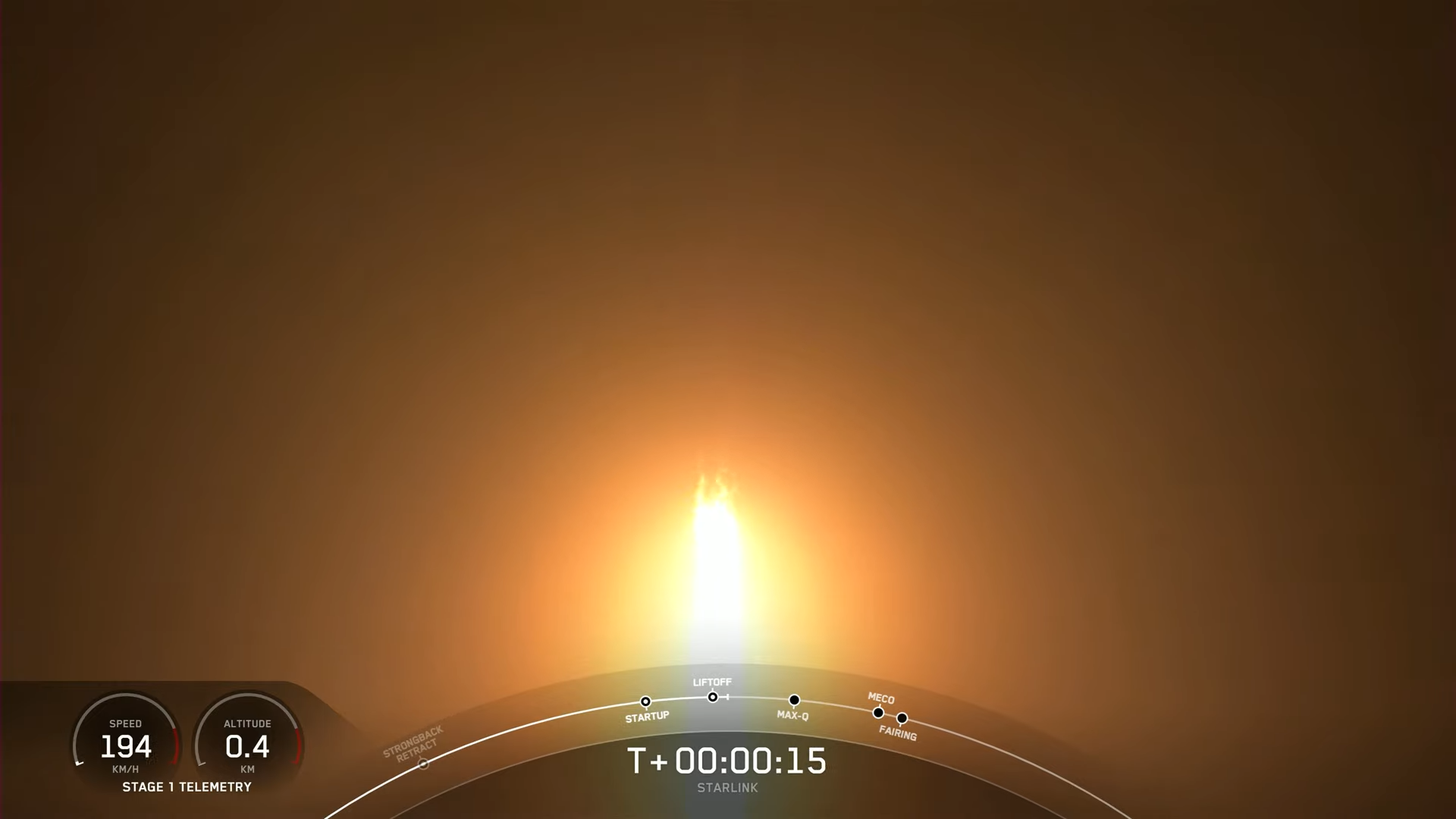
A dedicated “Vandenberg Falcon”, making a record-setting sixth launch out of the mountain-ringed West Coast launch site, roared smoothly aloft from Space Launch Complex (SLC)-4E at 10:40 p.m. PDT Tuesday (1:42 a.m. EDT Wednesday), laden with dozens more Starlink internet communications satellites bound for low-Earth orbit. The B1063 core—making the seventh flight of her career, having also launched once from the Space Coast last year—wrapped up SpaceX’s final mission of August with a pinpoint touchdown on the deck of the Autonomous Spaceport Drone Ship (ASDS), “Of Course I Still Love You”.
As well as marking a personal-best-tying sixth Falcon 9 in a single calendar month, repeating a feat done previously in April and July, tonight’s mission marked SpaceX’s second flight of August from Vandenberg Space Force Base, Calif., as SpaceX’s aggressive 2022 launch cadence rumbles on. Thirty-nine Falcon 9 flights have been executed inside the first nine months of the year using only 11 boosters, including two brand-new core stages and one frequently-flown vehicle which logged no fewer than six missions since January.
In readiness for Tuesday night’s launch attempt, the ASDS “Of Course I Still Love You” —which was transferred to Vandenberg last summer after a stellar East Coast career—departed Port of Long Beach last weekend, bound for a position about 400 miles (640 kilometers) downrange. Very light cloud coverage was anticipated at the launch site, with visibility as high as nine miles (15 kilometers), promising an unusually clear perspective for Falcon 9-watchers in the Vandenberg area.
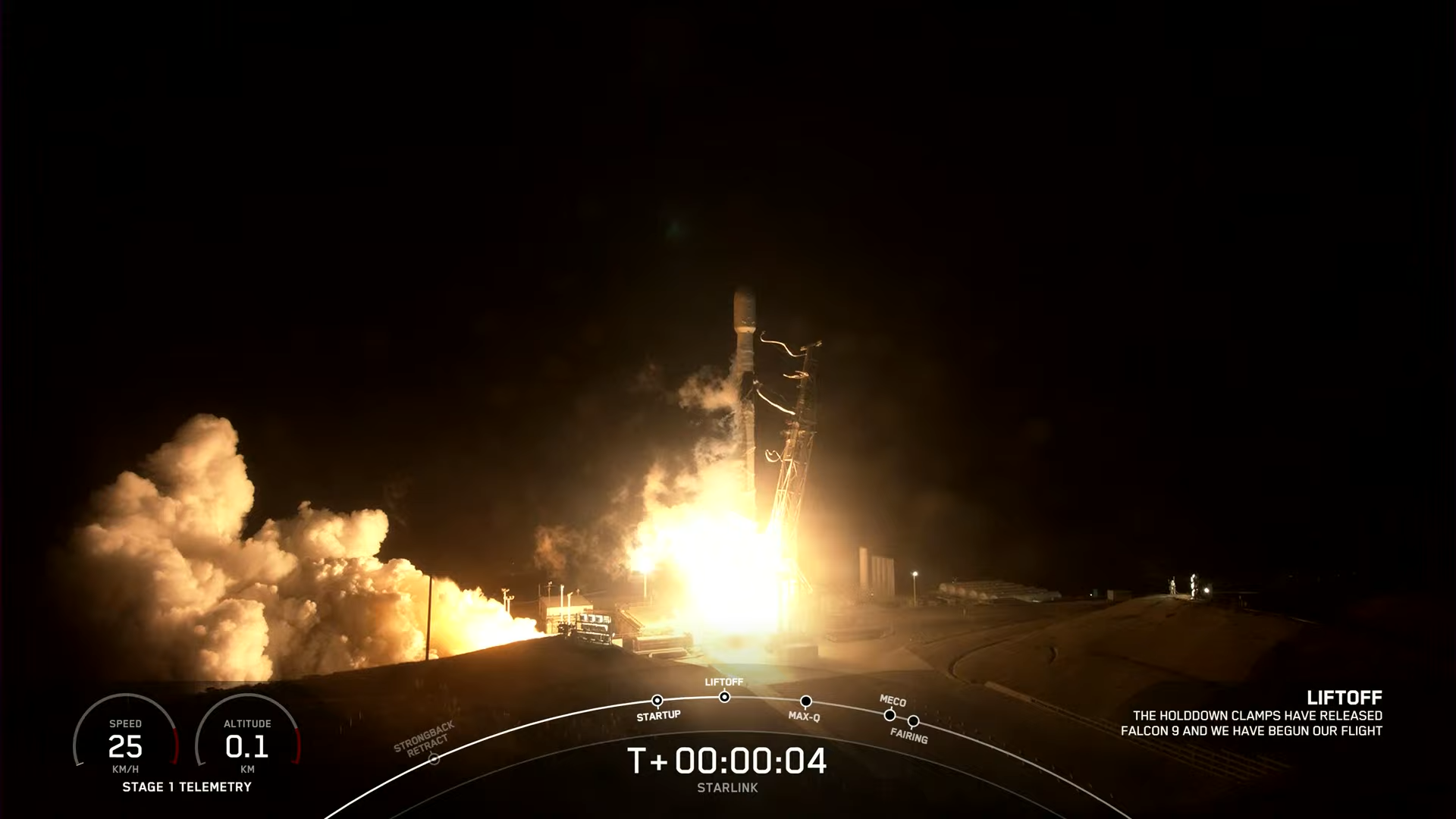
Liftoff came right on time at 10:40 p.m. PDT Tuesday (1:40 a.m. EDT Wednesday) and B1063 powered smoothly uphill, her nine Merlin 1D+ first-stage engines delivering an estimated 1.5 million pounds (680,000 kilograms) of thrust. The core separated from the 230-foot-tall (70-meter) stack at 2.5 minutes into ascent, after which the Merlin 1D+ Vacuum engine of the Falcon 9’s second stage came alive for a customary six-minute “burn” to deliver the 46-strong Starlink payload to orbital velocity. The satellites were deployed about an hour after launch.
Meanwhile, her job done, B1063 returned to Earth, guided by her computerized brain, movable hypersonic grid-fins and a sequence of intricately timed Entry and Landing Burns, to alight on the deck of OCISLY about 8.5 minutes after launch. She becomes the first Falcon 9 core to fly as many as six times out of Vandenberg.
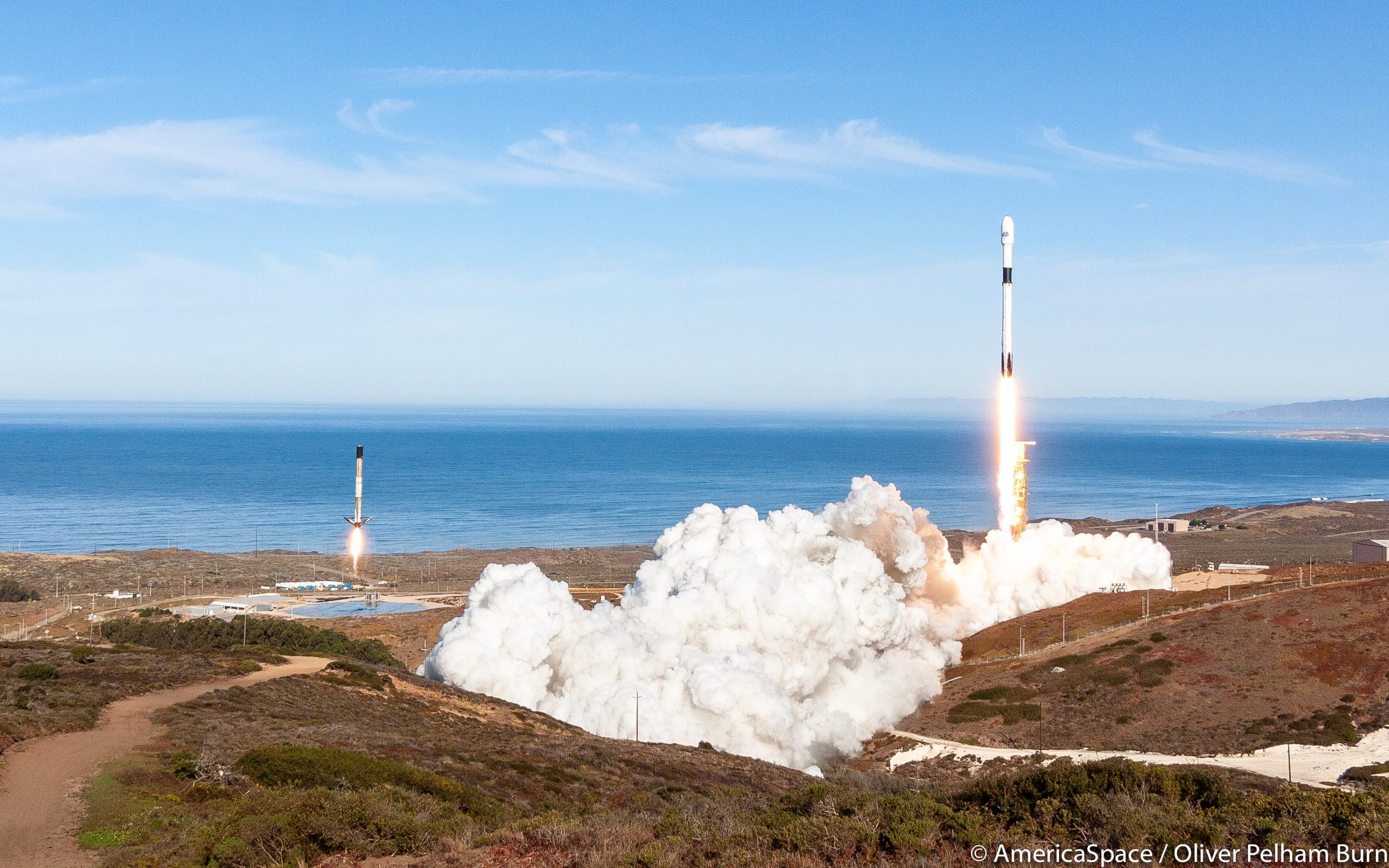
In fact, this particular booster is one of few members of SpaceX’s fleet to have alternated her launches between the West and East Coasts, then back again. B1063 first flew out of Vandenberg in November 2020 to deliver the NASA-led Sentinel-6A Michael Freilich radar-imaging oceanography satellite into low-Earth orbit, before relocating briefly to Florida to launch a 60-strong “stack” of Starlinks in May of 2021.
Returned in the summer of 2021 to Vandenberg, she supported last November’s Double Asteroid Redirection Test (DART) launch and three more Starlink flights in February, May and July 2022. And with tonight’s fourth Starlink mission, she has now lifted no less than 255 of these flat-packed internet communications satellites into low-Earth orbit.
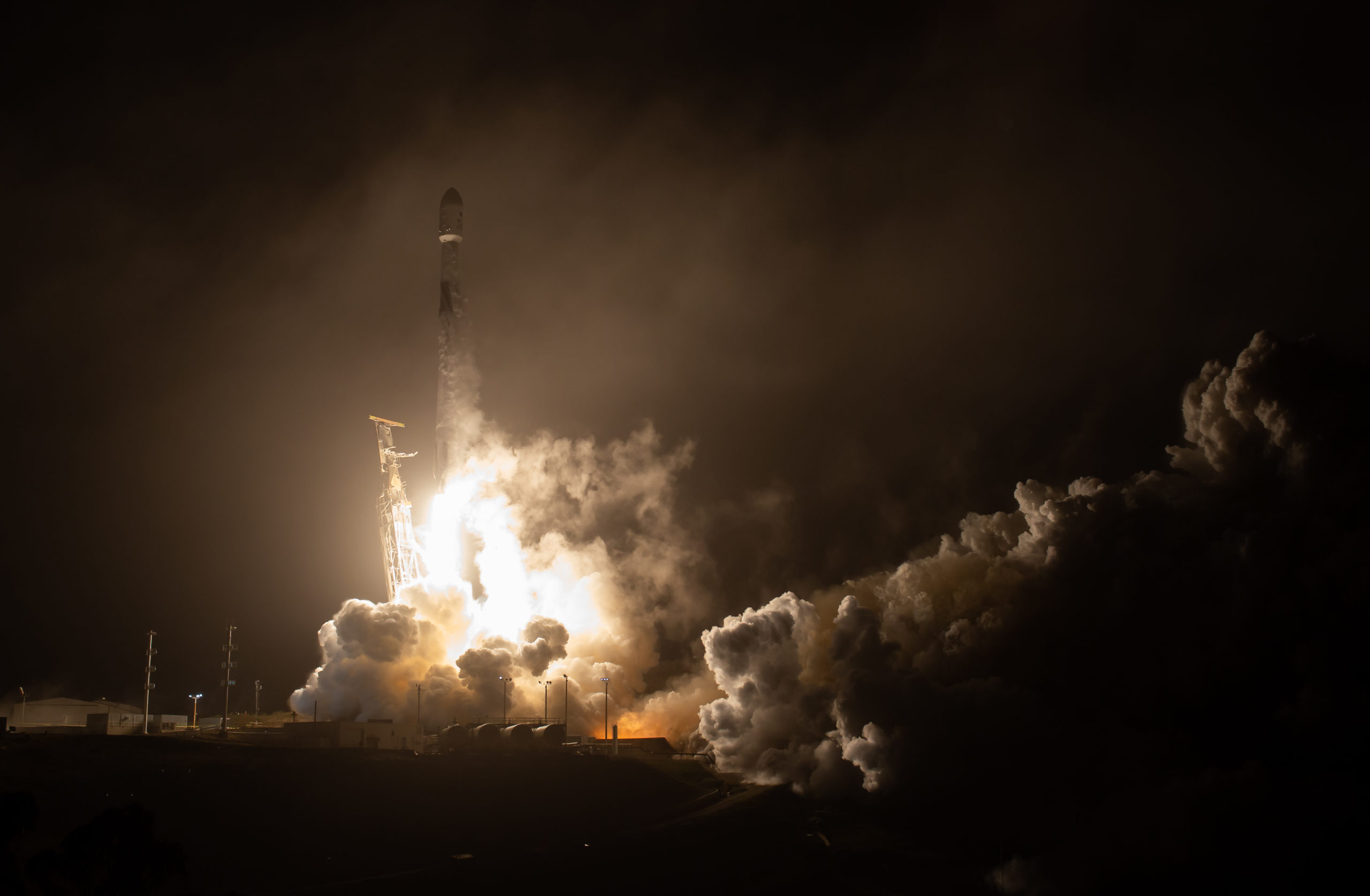
The 46 satellites aboard tonight’s mission are targeting the third orbital Starlink “shell” at an altitude of 350 miles (560 kilometers), inclined 97.6 degrees to the equator. The first members of this shell rode uphill in the second week of July and with tonight’s flight a total of 184 satellites of an eventual 348 have been orbited.
Starlink’s progress as an internet provider on the world stage has advanced in leaps and bounds in 2022, notably with emergency provision granted to Ukraine earlier this year following Russia’s invasion. Availability was expanded to Moldova, Estonia and Colombia in August and earlier this week SpaceX announced that Norway has also signed up for Starlink services.
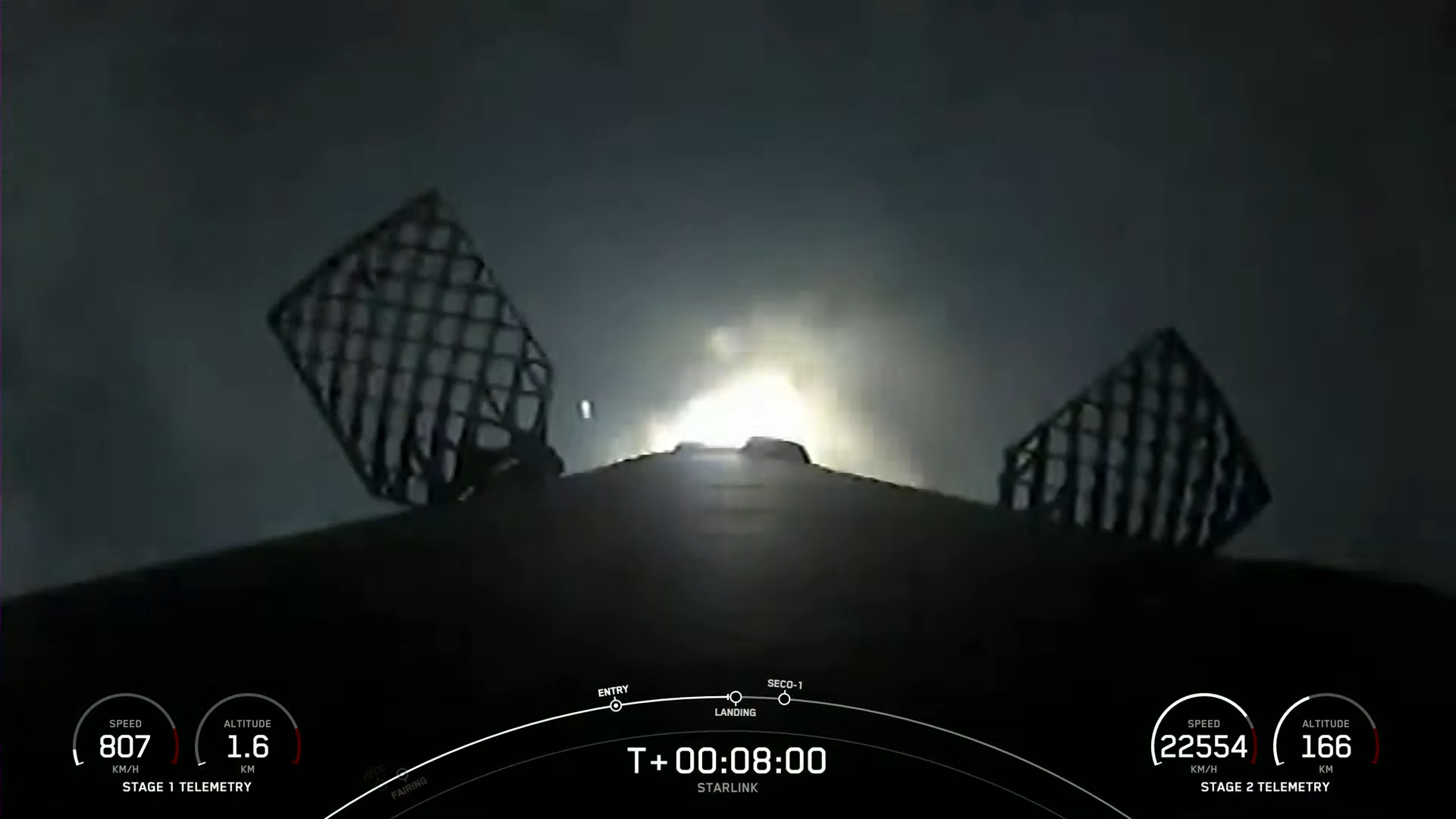
That brings to 18 the number of nations which have adopted Starlink since the start of the year. And since the fall of 2020, regulatory approval for Starlink has been granted for more than 40 countries spanning North and South America, Europe and Oceania.
With the completion of tonight’s mission, SpaceX has now flown nine times out of Vandenberg in 2022 using only three boosters, a significant uptick on its previous record of six launches back in 2018. In total, 287 Starlinks have flown on six missions from the West Coast so far this year, together with a pair of classified payloads for the National Reconnaissance Office—NROL-87 in February and NROL-85 last April—and Germany’s SARah-1 radar-imaging surveillance satellite in June.
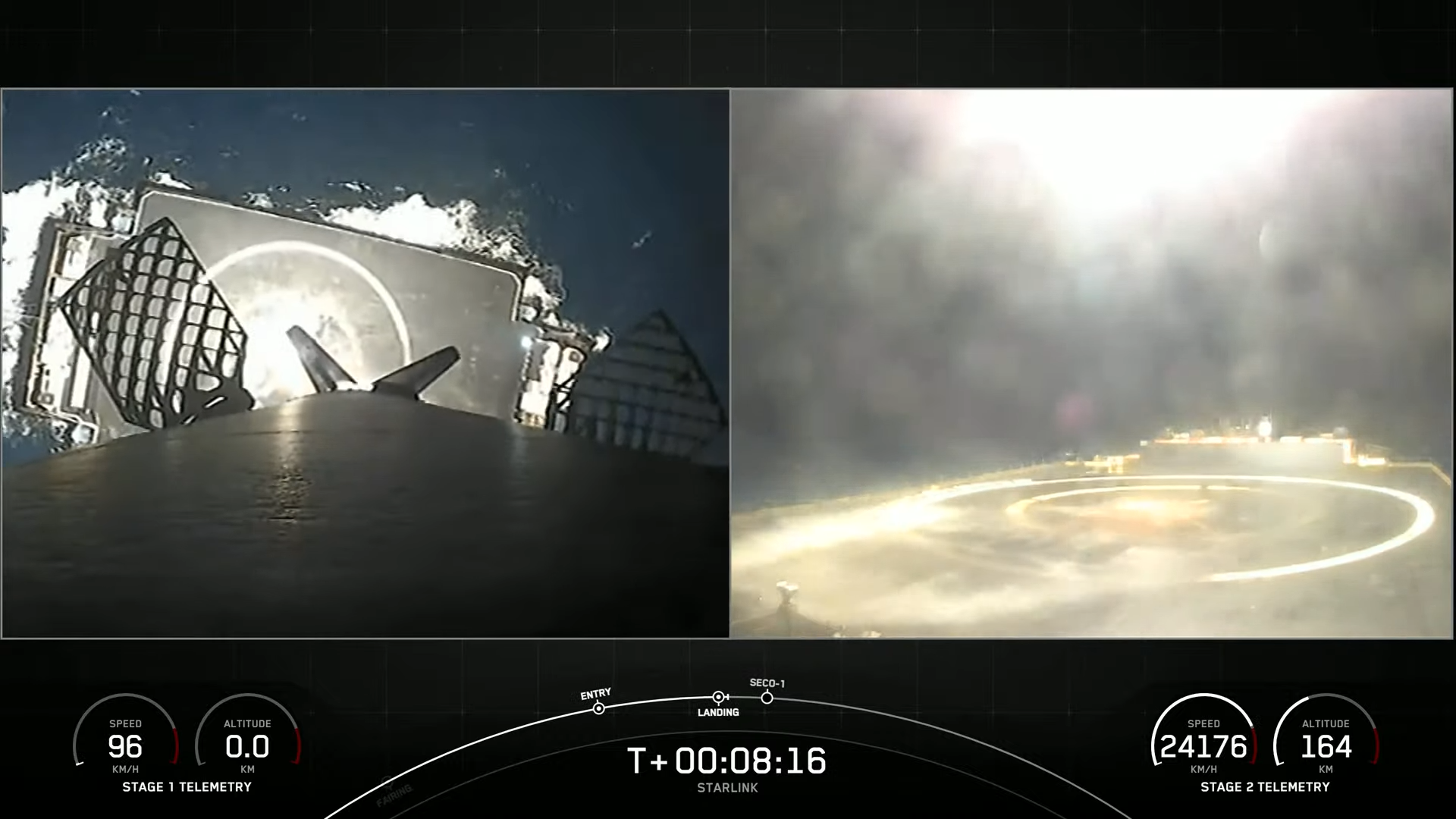
And having now flown twice per month over two consecutive months, SpaceX’s Vandenberg campaign shows no signs of slowing down. With Shell 3 more than halfway towards completion, it does not seem unreasonable to suppose that this high-inclination shell of Starlinks will be finished before year’s end.
And three missions to Starlink’s Shell 4—at 53.2 degrees inclination—have also flown out of the West Coast in 2022, raising the possibility that more could follow. Added to that list is the September inaugural launch of the Tranche 0 Transport and Tracking Layer for the Space Development Agency (SDA), contracts for which were signed with SpaceX in January 2021 for an estimated total value of $150.45 million.
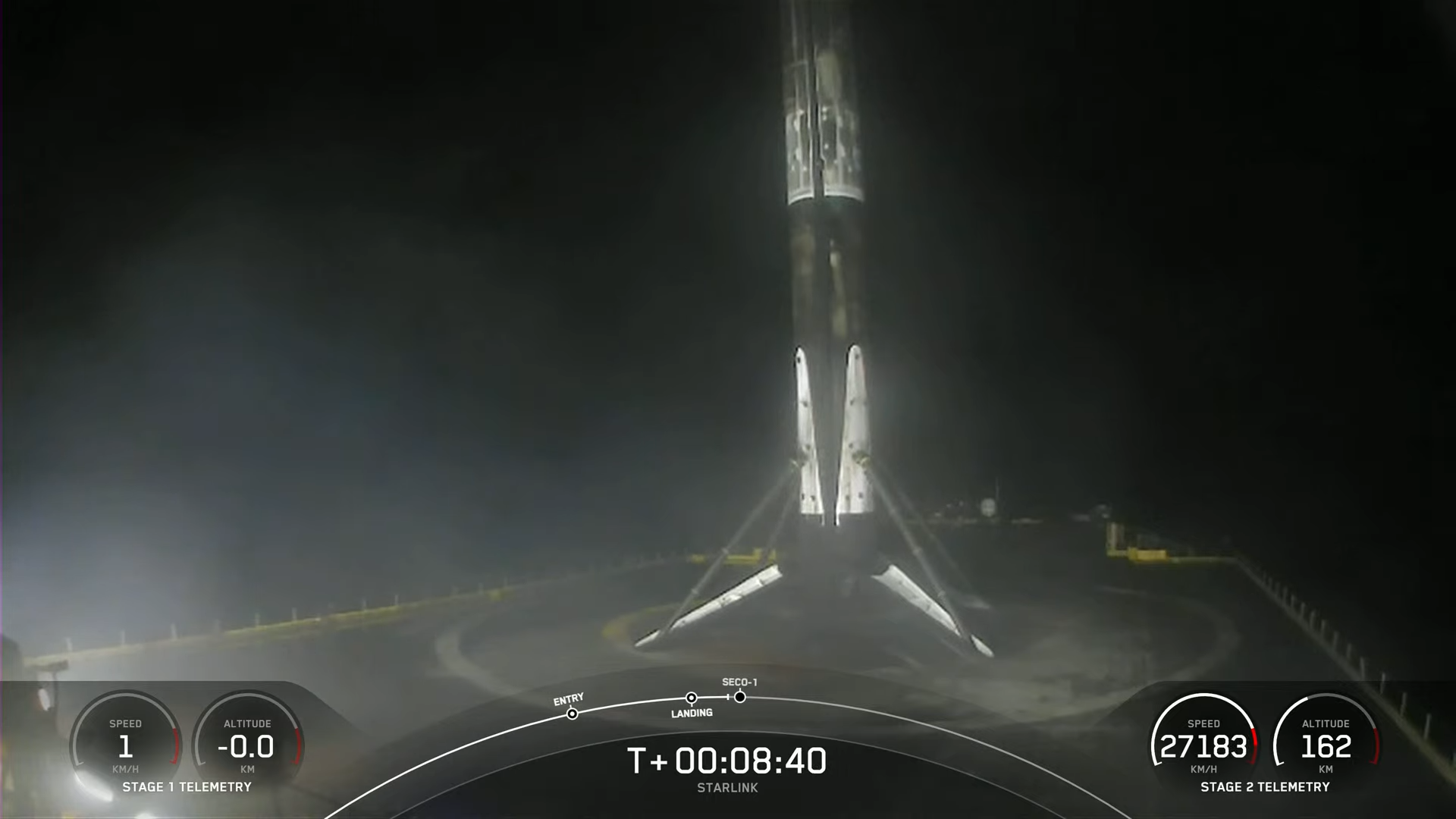
This will form the basis of an eventual “constellation” of 300-500 low-orbiting experimental satellites to furnish ground-based warfighters with “assured, resilient, low-latency military data and connectivity worldwide”, plus Wide Field of View (WFOV) infrared sensors for hypersonic missile tracking. Another Falcon 9 will deliver four WorldView Legion satellites to Sun-synchronous orbit for Westminster, Colo.-based Earth imagery provider DigitalGlobe.
This second batch of the Maxar-built Legion will double DigitalGlobe’s capacity to gather high-resolution geospatial imagery by resolving surface details as small as 12 inches (30 centimeters). And later in the year, another Falcon 9 is set to lift the NASA-led Surface Water Ocean Topography (SWOT) mission to examine the changeability of surface water bodies over time.





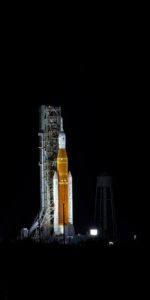
3 Comments
3 Pings & Trackbacks
Pingback:SpaceX’s Third Falcon 9 of September Launches at Sixth Attempt - AmericaSpace
Pingback:SpaceX Launches 2022’s Tenth Falcon 9 from Vandenberg, As Busy October Beckons - AmericaSpace
Pingback:Record-Setting “Vandenberg Falcon” Flies, as SpaceX Heads for 50th Launch of 2022 - AmericaSpace